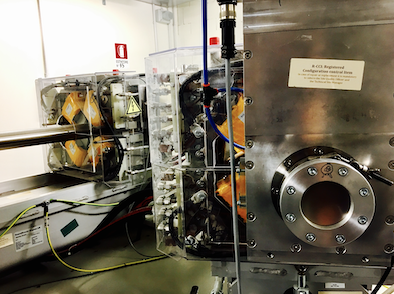Speaker
Description
Although three decades of research have been trialled, the prognosis for patients with high-grade gliomas (HGGs) has not significantly changed.
The aim of our project is the development of a new combined treatment that could sensitize HGGs to therapies, reducing side effects and improving quality of life of the patients.
We will develop a new multidisciplinary protocol, combining the conventional used Doxorubicin (Dox) with proton therapy (PT), in order to elucidate the potential of this combined treatment as available approach for HGGs therapy.
First step experiments have been set up to investigate the effect of PT on cell growth. Two glioblastoma (GBM) cell lines (T98G and A172) were treated with scalar concentrations of PT (1Gy, 2Gy, 4Gy, 8Gy and 16Gy). After treatments, cells replication ability was evaluated by clonigenic assay.
After PT treatments, T98G cells showed an average colony count of: 0 Gy: 39 colonies; 1 Gy: 16.5 colonies; 2 Gy: 20.5 colonies; 4 Gy: 17.5 colonies; 8 Gy: 3 colonies and 16 Gy: 0.5 colony
Similarly, A172 showed an average colony count of: 0 Gy: 14 colonies; 1 Gy: 10.5 colonies; 2 Gy: 9.5 colonies; 4 Gy: 7 colonies; 8 Gy: 2 colonies; 16 Gy: 1.5 colonies.
These preliminary data, obtained from this pilot experiment, have indicated that GBM cells are sensitive to PT treatment. Moreover, growth and propagation ability of treated cells was inversely proportional to PT doses.
Ideed, the higher PT doses (8Gy and 16Gy) caused a drastic reduction in the number of colonies observed compared to the other experimental groups.
Subsequently, the cytotoxic effect of combined treatments Dox plus PT was evaluated in GBM cell lines (T98G and A172).
GBM cells were irradiated with several doses of PT (1Gy, 2Gy, 4Gy, 8Gy and 16Gy) and after 24 hours treated with increasing concentrations of Dox (0.05- 0.1- 0.2 and 0.5 µg/ml).
The cytotoxic effect of the treatments was assessed in terms of cell viability by MTT assay.
The optical density (OD) values (OD is directly proportional to the number of viable cells) detected in T98G (GBM cells resistant to Dox) were more or less constant in all irradiated groups compared to the control, except for 8Gy which showed a reduction in cell viability. Treatment with Dox, as expected and under all conditions, does not significantly change the OD values.
Finally, in A172 cells the OD value decreases from 0Gy to 16Gy proportionally to the intensity of the radiation, demonstrating the effectiveness of PT on this cell line.
Moreover, in this cell line, Dox treatments showed significant effects compared to controls.
The preliminary data obtained from MTT test demonstrated that the A172 cell line is sensitive to PT and to the combined treatment PT plus Dox (especially in the 16Gy plus Dox 0.5ug/ml group) with a significant reduction of cell viability.
Dox and PT novel combination may provide the rationale for a clinical application of this innovative multidisciplinary protocol in the treatment of GBM and other HGGs.
Further experiments have to be carried out to validate the preliminary data, increasing the statistics and the sample size.

